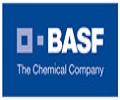Frequently Asked Questions
1Why should I buy a report from Stats N Data?
Stats N Data endeavors to provide a “To the Point Analysis” of every market research report. We provide detailed market forecasting and quality analysis in each report irrespective of its domain. We have varied domains and expertise pertaining to each domain. Our experienced team including domain leads and analysts is highly experienced is committed to providing crisp analytical reports with room for customization. We are a client-oriented organization and always put our client’s demands first. Stats N Data offers a customization service in each of the syndicate reports and a client is free to ask specific requirements.
2 What is the procedure to purchase a report?
A client can select the concerning report from our website and fill in the required details and check out. A client can choose any one of the following payment options: credit card (through our secured payment gateway that accepts all major credit cards), PayPal, wire transfer.
3 What if I am interested in a topic that does not exist in the current catalog of reports?
Stats N Data takes pride in serving our clients and gladly works on any topic which is not on the list. Additionally, customizations are also available on each report as per the client’s demand.
4 When do I get access to the report(s) that I have purchased?
The report will be emailed to you the moment we receive your payment. In the case of customization 3-5 working days are taken to offer the desired request from the client.
5 After the purchase will I receive an invoice for any purchase?
Yes, the client will receive an invoice/payment confirmation with details of the order through email.
6 What else does Stats N Data offer apart from Market Research reports?
Stats N Data offers Consulting, Custom reports, and Company Profiling services to our clients across the globe. We have experienced teams for varied services which are operated to serve our clients. Stats N Data is committed to offering quality analysis in each service so that the client gets the desired requirement. Our experienced team provides enough material for the clients to make business decisions.










